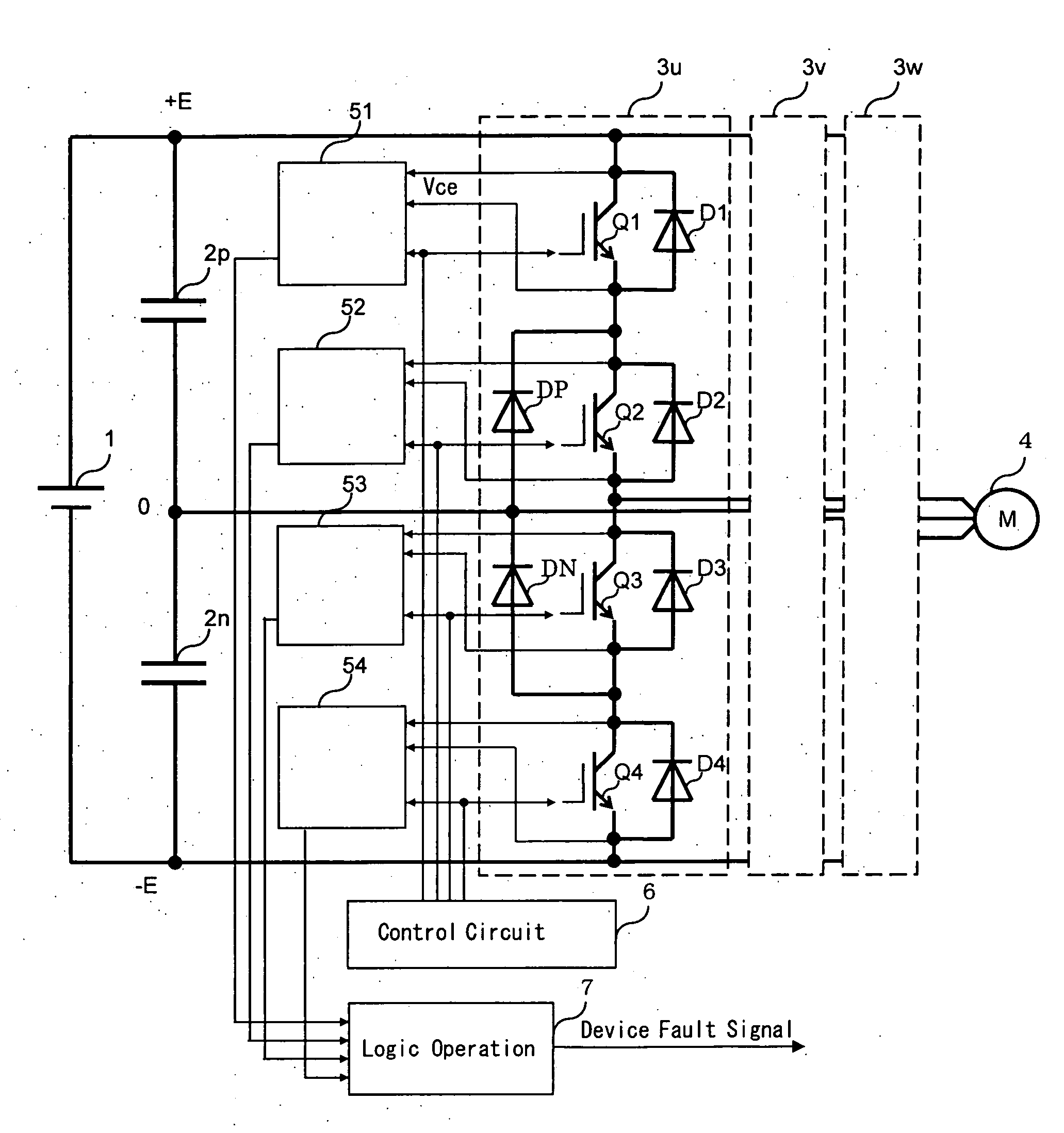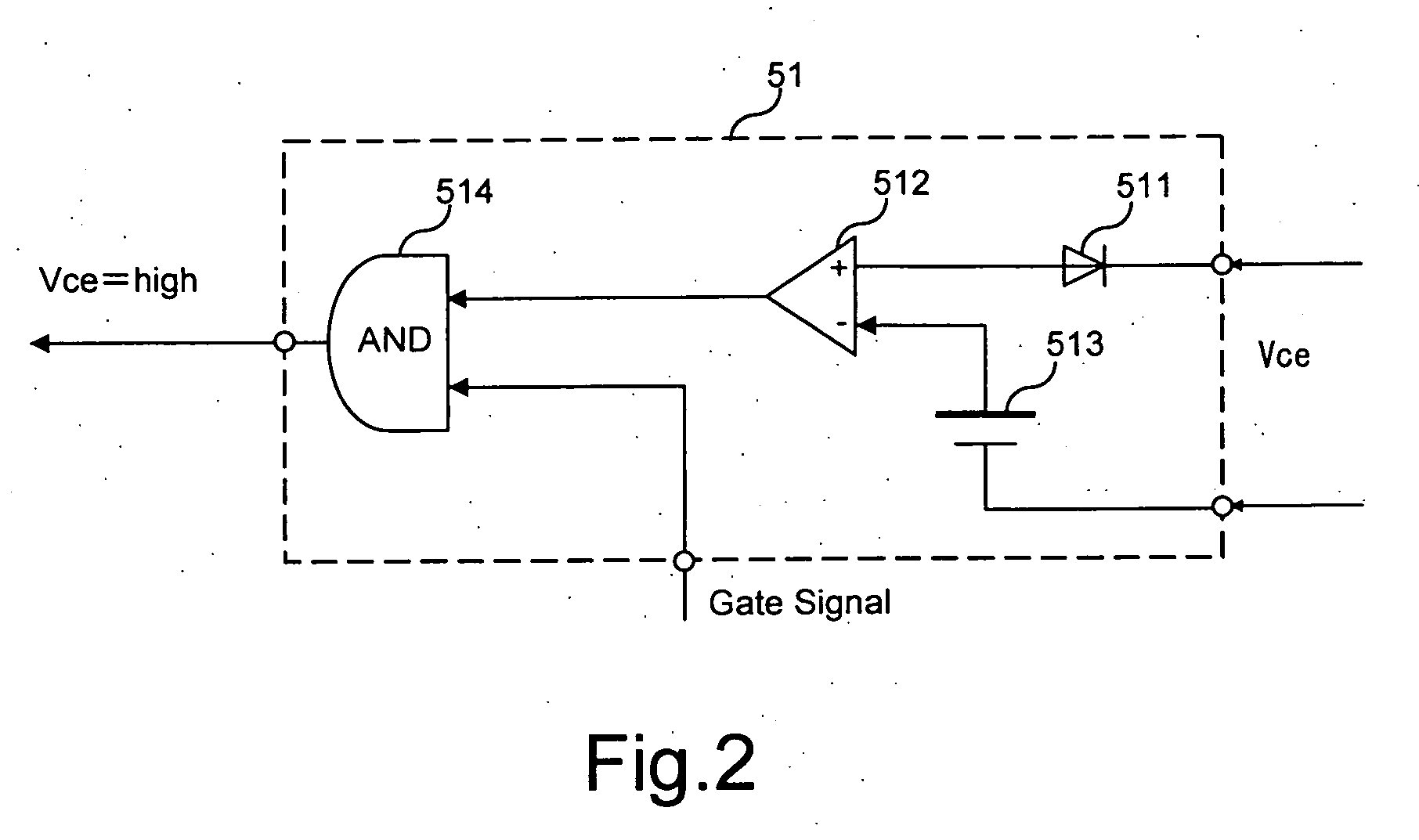Multi-level power converter
a power converter and multi-level technology, applied in power conversion systems, emergency protective arrangements for limiting excess voltage/current, electrical equipment, etc., can solve the problems of difficulty in adjusting the delay time, difficulty in detecting abnormally high voltage between the positive and negative terminals of the switching element, and time-consuming and labor-intensive problems, to achieve the effect of high reliability
- Summary
- Abstract
- Description
- Claims
- Application Information
AI Technical Summary
Benefits of technology
Problems solved by technology
Method used
Image
Examples
first embodiment
[0027] With reference to FIGS. 1 to 7, a multi-level power converter of the first embodiment according to the invention is explained. FIG. 1 shows a circuit diagram of the power converter relating to the first embodiment of the present invention.
[0028] A DC voltage obtained from a DC power supply 1 is supplied to a series circuit consists of DC capacitors 2p and 2n having same capacitance. The DC power supply 1 has the voltage of 2E. Therefore, when positive side voltage potential of DC capacitor 2p is +E, negative side voltage potential of DC capacitor 2n is −E, and a voltage potential of central terminal of the DC capacitors 2p and 2n is 0 potential.
[0029] These three voltage potentials +E, −E and 0 are supplied to the switching legs 3u, 3v, and 3w. In FIG. 1, the internal composition of switching leg 3u is illustrated. Since the internal composition of other switching legs 3v and 3w are fundamentally same composed as that of switching leg 3u, those illustrations and explanation...
second embodiment
[0046] With reference to FIGS. 8 to 11, a multi-level power converter of a second embodiment according to the invention is explained. FIG. 8 shows an internal circuit diagram of a voltage detector 51A applied to the second embodiment of the multi-level power converter according to the present invention.
[0047] To the same parts of the second embodiment as those shown in the circuit diagram of the voltage detector 51 relating to the first embodiment shown in FIG. 2, the same numerals are assigned and the explanation thereof will be omitted. In the second embodiment, a time delay circuit 515 is inserted at the output side of the comparator 512 in the voltage detector 51A and the output of the time delay circuit 515 might be given to AND circuit 514.
[0048] As mentioned above, the time delay circuit 515 protects an incorrect detection during a transient state when the switching element Q1 turns on. Since voltage Vce is over the threshold level irrespective of an existence of the over-c...
third embodiment
[0057] With reference to FIGS. 12 and 13, a multi-level power converter of a third embodiment according to the invention is explained. FIG. 12 shows an internal circuit diagram of a voltage detector 51B applied to the third embodiment of the multi-level power converter according to the present invention.
[0058] To the same parts of the third embodiment as those shown in the circuit diagram of the voltage detector 51A relating to the second embodiment shown in FIG. 8, the same numerals are assigned and the explanation thereof will be omitted. In the third embodiment, an AND circuit 514A is added to the voltage detector 51A relating to the second embodiment shown in FIG. 8. A direct output signal from the comparator 512 and the gate signal are inputted to the AND circuit 514A.
[0059] Therefore, a voltage detector 51B outputs two signals with time delay and without time delay as the voltage Vce “high” signal of the switching element during a period of its ON-state. In the case of the t...
PUM
 Login to View More
Login to View More Abstract
Description
Claims
Application Information
 Login to View More
Login to View More - R&D
- Intellectual Property
- Life Sciences
- Materials
- Tech Scout
- Unparalleled Data Quality
- Higher Quality Content
- 60% Fewer Hallucinations
Browse by: Latest US Patents, China's latest patents, Technical Efficacy Thesaurus, Application Domain, Technology Topic, Popular Technical Reports.
© 2025 PatSnap. All rights reserved.Legal|Privacy policy|Modern Slavery Act Transparency Statement|Sitemap|About US| Contact US: help@patsnap.com



